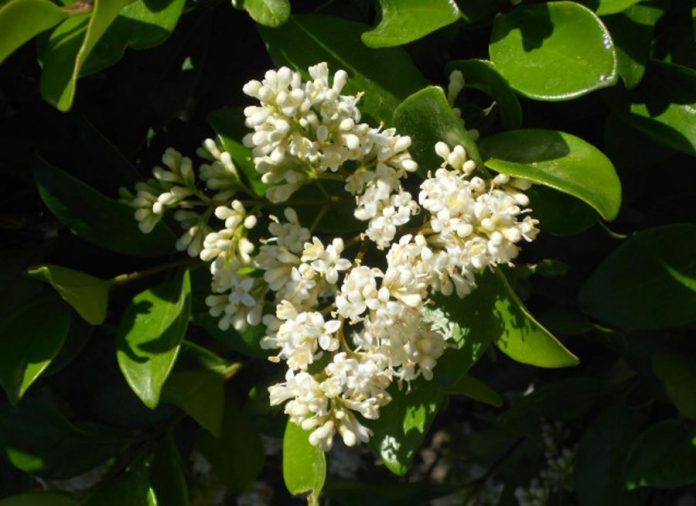 Properly speaking, a shrub is a perennial plant with multiple woody stems that stop growing at around 15 feet tall. For the imagination-impaired, that’s two stories into the wild blue like some tall varieties of crape myrtle. A shrub may shed its leaves in the autumn, but generally the stems do not die back to the ground to start over in the spring. Again think about crape myrtle growth habits.
Properly speaking, a shrub is a perennial plant with multiple woody stems that stop growing at around 15 feet tall. For the imagination-impaired, that’s two stories into the wild blue like some tall varieties of crape myrtle. A shrub may shed its leaves in the autumn, but generally the stems do not die back to the ground to start over in the spring. Again think about crape myrtle growth habits.
Some gardeners choose to trim and shape a shrub down to a single stem so the plant looks like a tree. This does not make the shrub a tree, but rather an imitation called a “standard.” That’s horti-speak for the artistic result of gifted pruning. I recently admired mature wax leaf ligustrum standards shading a wall of massive west-facing windows in what can only be described as a chateau in east Texas. The leafy standards kept the sunlight off the glass, did not impede the view, and looked totally fabulous.
Shrubs planted close enough together to form a line then grown and trimmed to look like one big plant are called a hedge. Most shrubs can be grown this way, but some accomplish the task better than others. Typical hedges are maintained at low, medium, or tall heights depending on the reason they were planted.
Formal garden designs often use 12 inch boxwood hedges as the boundaries of geometric figures filled in with flowering plants. Medium hedges stand from 1-6 feet tall, and generally form backgrounds to show off or hide other garden features. I once maintained red tipped photinias to block the view of a 6 foot wood fence. Medium hedges impede all kinds of traffic. Hedges over 6 feet tall are called full hedges. They block wind, sun, views, and traffic. Get a tall ladder if you want a full hedge sheared to look flat like a wall.
The central Texas good news is that a full-looking shrub or hedge needs full sun. For a lacy look, plant in the shade. As always there are exceptions to this rule of thumb.
The “brush” shrubs and naturally shorter trees under a forest canopy are called its “understory” plants. In part these shorties are the result of limited sunlight, but many are genuine shrubs whose stems do not soar to dizzying heights when blasted by full sun.
Shrubs come in 2 categories: deciduous and evergreen. The Romans called something that is cast off a decidua. Deciduous perennials drop leaves in the fall. It’s free mulch you can turn under next spring to decompose and feed the worms so don’t bag it and send to the landfill. Evergreens can be conifers with needle looking leaves, but those wax leaf ligustrums I mentioned above keep their broad green leaves year round too.
Shrubs come in 8 possible natural shapes: pyramid, low branching, rounded, prostrate, column, compact, open, and weeping. Do your landscape homework before planting, and harness ordinary shapes to aid pruning and please the eye.
Here are the common names of some shrubs that do well in north central Texas. Barberry, Eleagnus, Euonymus, Hydrangea, Juniper, Ligustrum, Nandina, Photinia, Pittosporum, and Neil Sperry’s iconic Crape Myrtle. Shade tolerant shrubs that do well here are: common Camellia, Dogwood varieties, Eastern Redbud, Privets, Gardenia, Hollies, Azalea, Yew, and Viburnums. Many of these are also drought-tolerant though NOT drought-proof. Amend your soil with plenty of compost, and water regularly during the first year after planting for best results.












